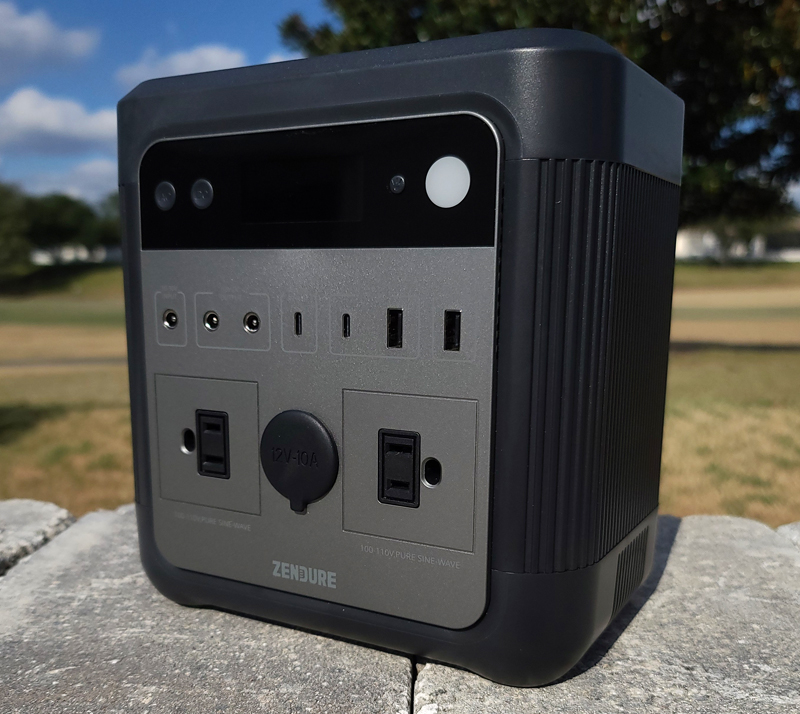
REVIEW – Power. We all use it. Cell phones, Bluetooth speakers, wireless headphones, laptops – the list goes on and on. Usually, we need to be somewhere near a power outlet to keep our electronics happily powered. There are a ton of small battery packs that can provide power for a recharge or two, but what about those times when you’re going to be away from a power source for a couple of days? What then?
Zendure is launching a crowdfunding campaign for a new portable power station, the SuperBase 500 along with a portable solar panel. Let’s see if these are contenders for the portable power that many are searching for.
What is it?
The SuperBase 500 is a 518Wh portable lithium-polymer power station with multiple charging and power options. The optional solar panel is a foldable and portable 100W three-panel system that can recharge the SuperBase 500 as well as power and recharge USB-powered devices.
What’s in the box?
SuperBase 500

- SuperBase 500 power station (pictured at the top of the article as well as below)
- Accessory case
- Recharging power brick
- Power cord for the recharger
- Auto lighter recharging cord
- Auto battery power cord
- User manual
- Warranty card
- Decorative stickers
- Early backers will also receive a carrying case that holds the SuperBase 500 and the accessory case
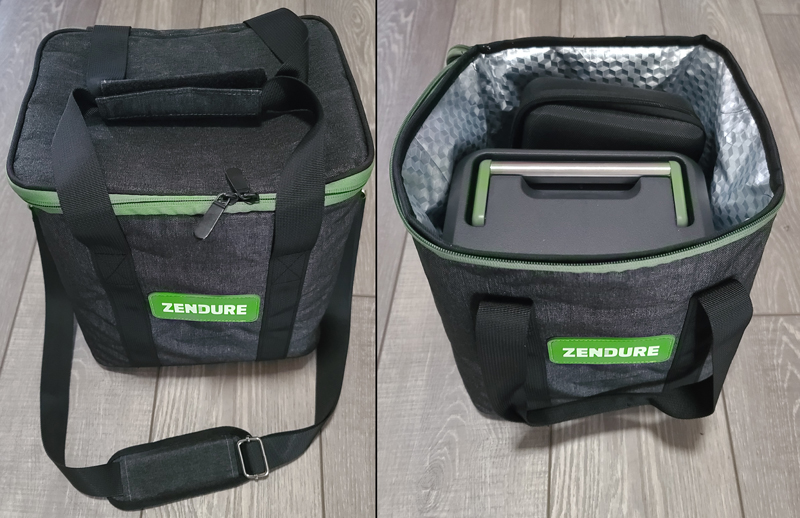
Solar charger
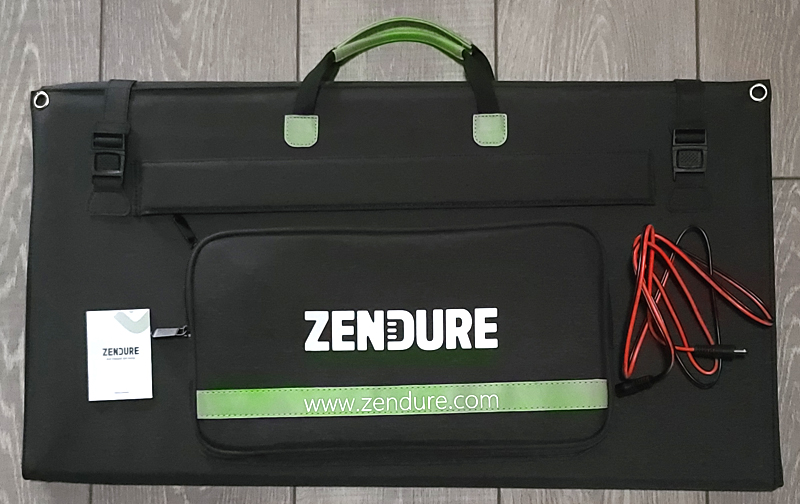
- Foldable solar charger with carrying handles and closure straps, front pocket, and foldable stand legs on each panel
- Solar panel to SuperBase 500 charging cable
- Warranty card
- User manual (not shown)
Hardware specs
SuperBase 500
- Dimensions: 7.5″W x 5.5″D x 8.5″ H
- Weight: 11 lbs
- Materials: ABS plastic cover
- Output power: 600W
- Capacity: 518Wh/140.000 mAh
- Recharge options: Wall socket, car lighter or battery, solar panel
- Recharge time:
- 100W AC adapter: about 6 hours
- 60W USB-C PD: about 10 hours
- 100W solar panel: about 10 hours
- Car charger: about 10 hours
- 100W AC adapter + 60W USB-C: about 3.5 hours
- Output options (9):
- DC 12V/10A 120W (x2)
- AC 110V/600W (x2) pure sine wave
- USB:
- USB-C 1: 5V-20V 60W
- USB-C 2: 5V/3A 15W
- USB-A 1: 5V-12V 15W QC3.0
- USB-A 2: 5V/3A 15W
- Auto cigarette lighter output port
- NOTE: All nine output ports can be used simultaneously
- Flashlight modes: Bright, dim, SOS – 1W LED
- Display: Realtime LED showing input or output power, remaining charge time or battery life based on the current rate of use, and output function (AC, DC, or both)
Solar charger
- Dimensions: 14″ x 25″ folded, 42″ x 26″ unfolded
- Weight: 8.8 lbs
- Peak power: 100W
- Solar conversion rate: 18.6%
- Connections: USB-A output (x2), DC output, parallel connection output (can connect up to three panel-sets together)
Design and features
The SuperBase 500 is pretty darn small for the power it packs. With a ton of different input and output options jammed into this little package, it is a compelling package for anyone that needs mobile power.
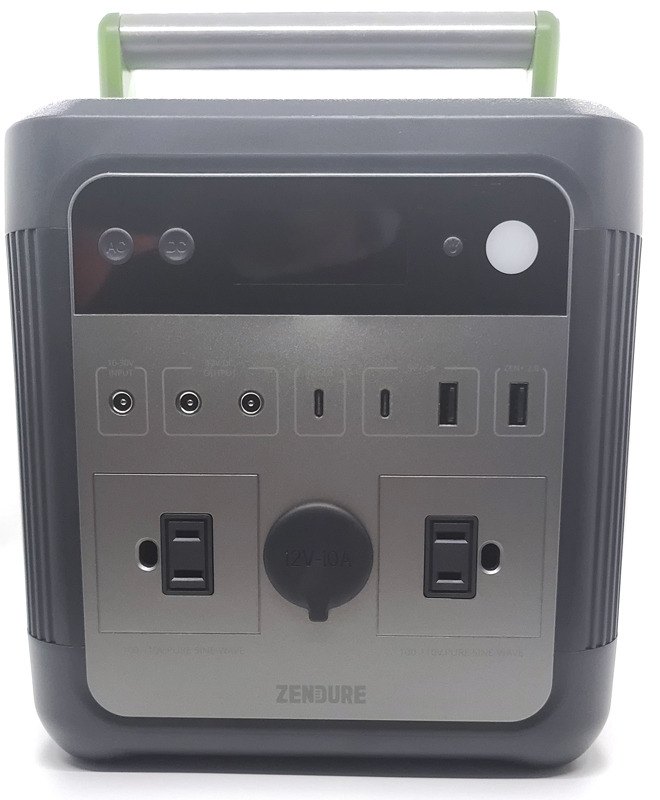
You can see the foldable handle at the top of the unit. When the handle is in the up position, it can double as a cell phone holder.
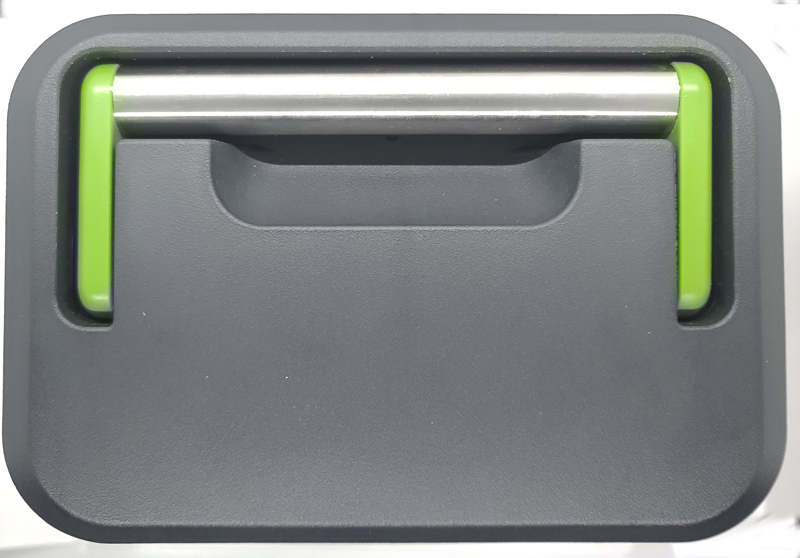
All input and output ports are on the front of the unit. You can also see the flashlight (white circle) and its control button toward the upper right. The AC and DC power switches are toward the upper left.
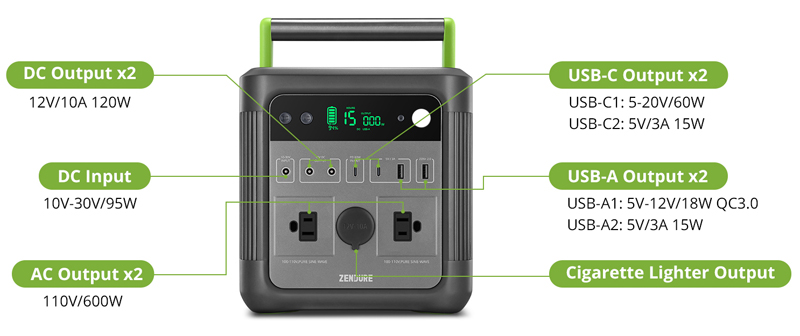
The back features the cooling fan output port.
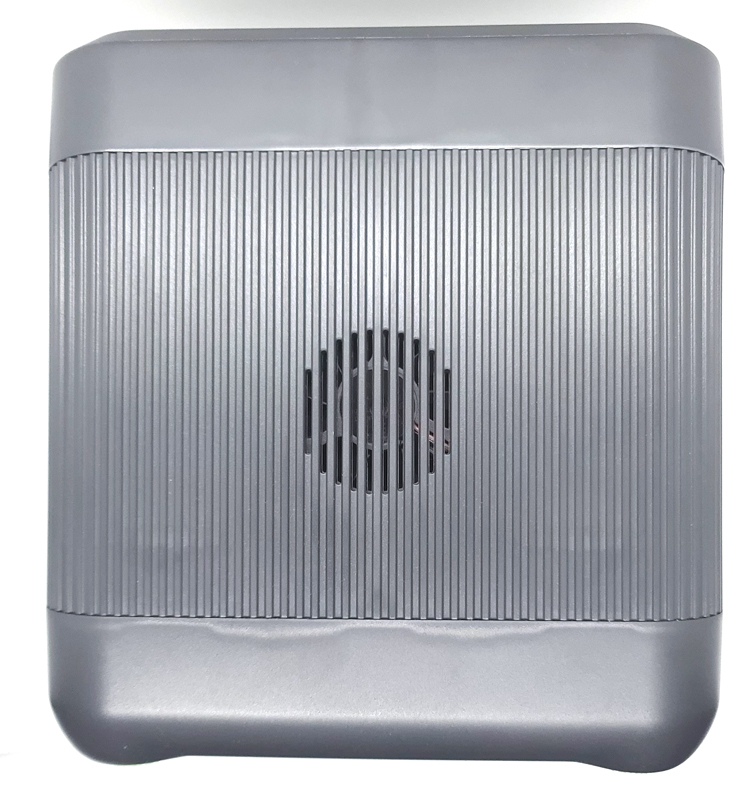
The bottom corners have nice, non-slip rubber feet.
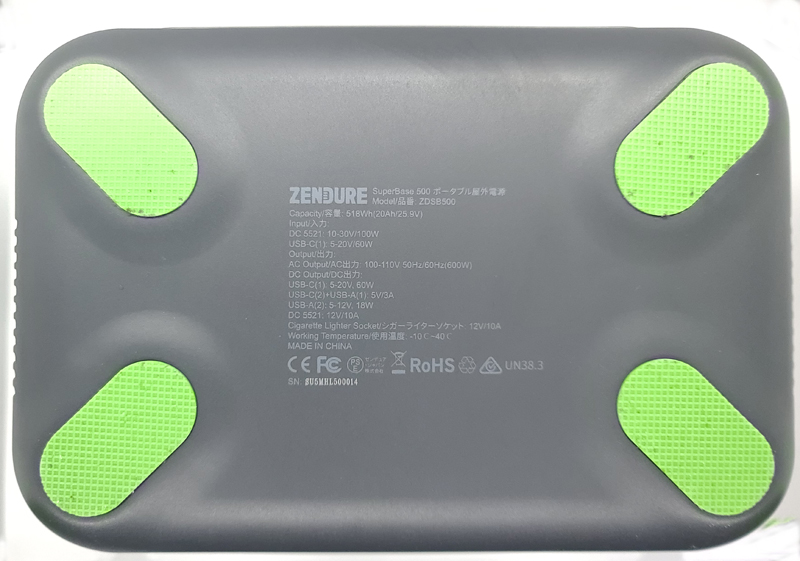
With the significant weight of the unit, the feet really do a good job keeping the SuperBase 500 in place.
The solar panel unfolds into three connected panels.
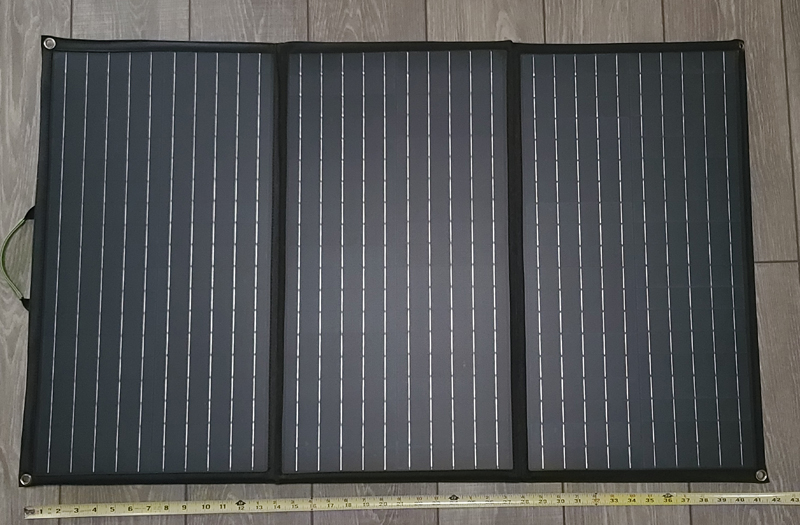
Each panel has a fold-out stand on the back.
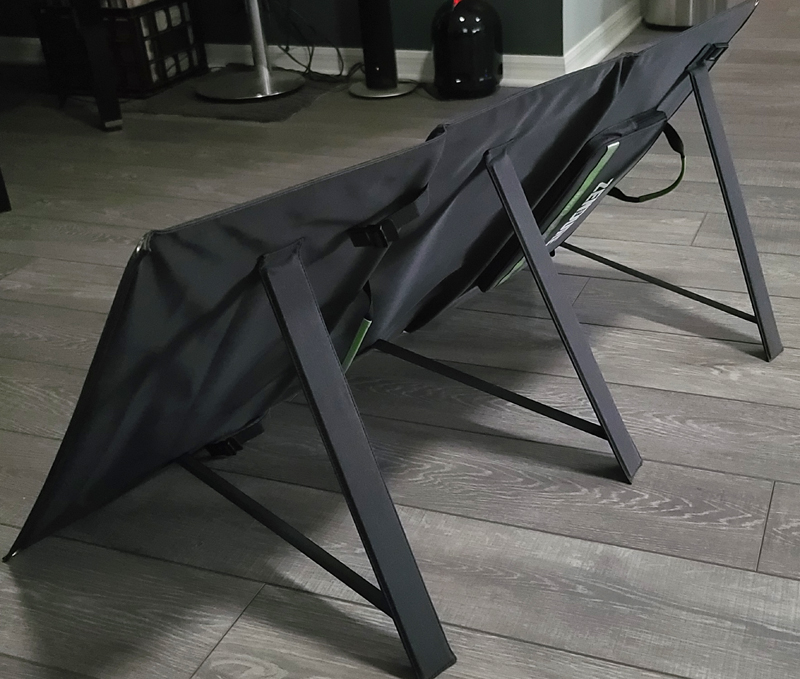
When set up, it stands about 19″ tall.
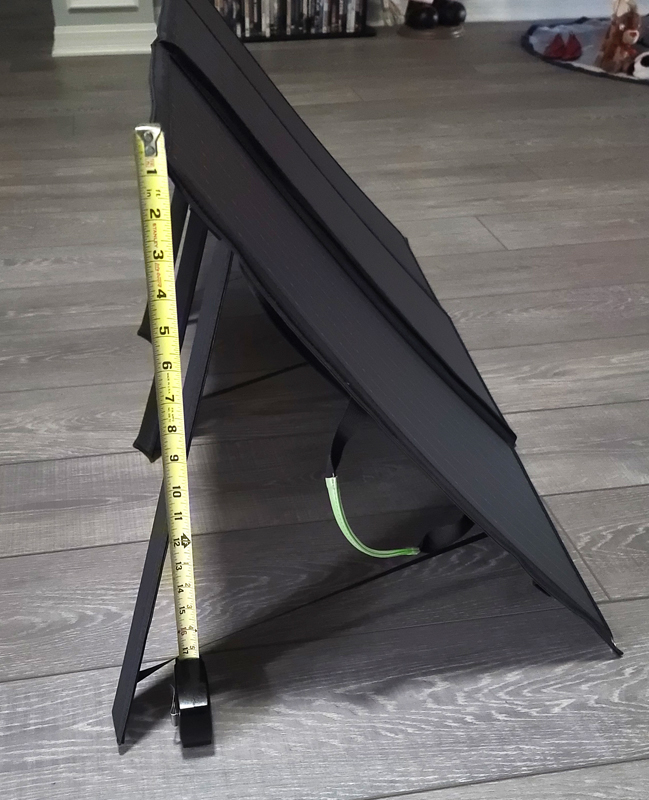
Inside the front pocket, we find the control module. The connections are covered with flip-up rubber covers. The top left connector is the DC output to charge the SuperBase 500. The top right covers the two USB-A ports. Along the right side is the input when connecting multiple panels to boost output capacity. On the top, to the left of the DC output port, there is a small LED that illuminates green when the panel is producing electricity.
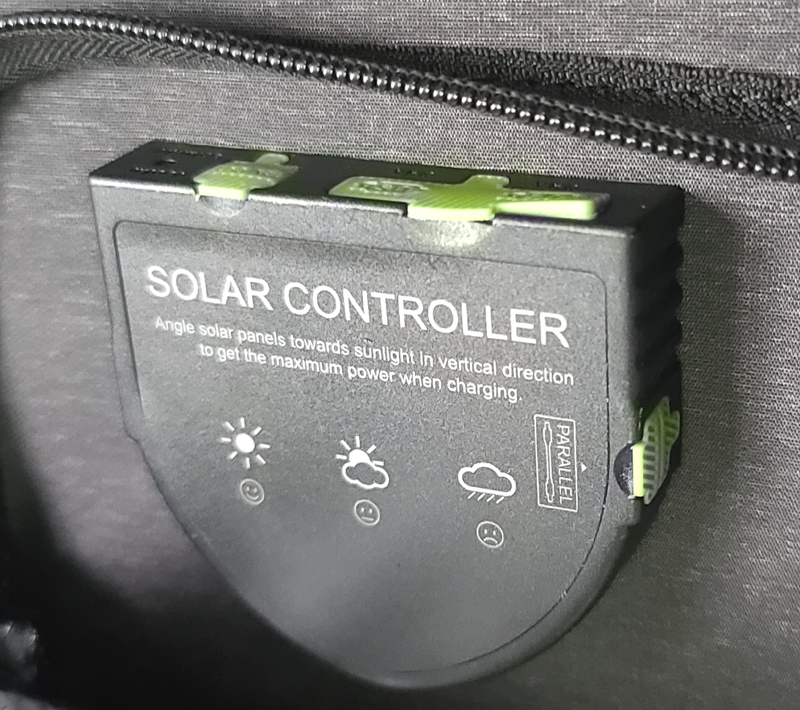
Setup
The only setup involves charging the unit for first use.
The display showed that it arrived 30% charged and with the 100W AC charger plugged in, it would take about 4 hours to fully charge. That’s pretty consistent with the 6-hour claim to charge.
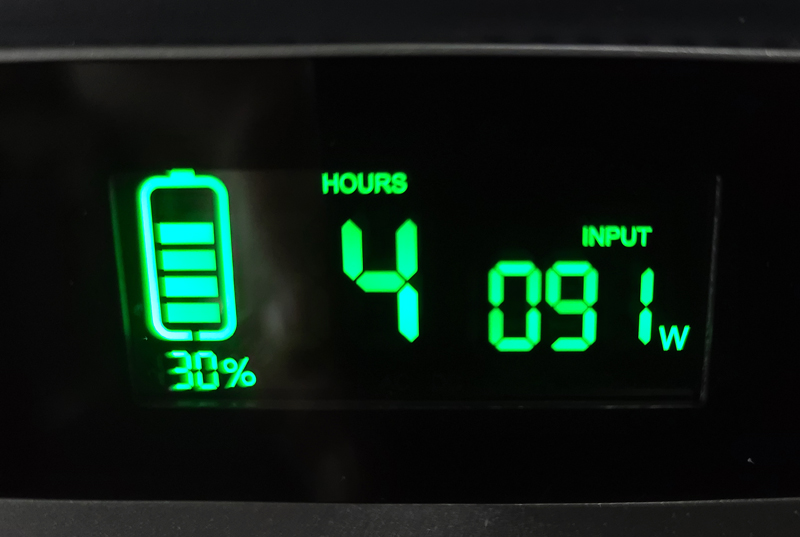
Performance
To turn the unit on and off, you press and hold the AC or DC buttons on the top left of the front panel. You can run both at the same time, providing dual AC output as well as USB and DC output.
To test runtime, I plugged in my old 500W halogen work lamp and fired up the AC output.
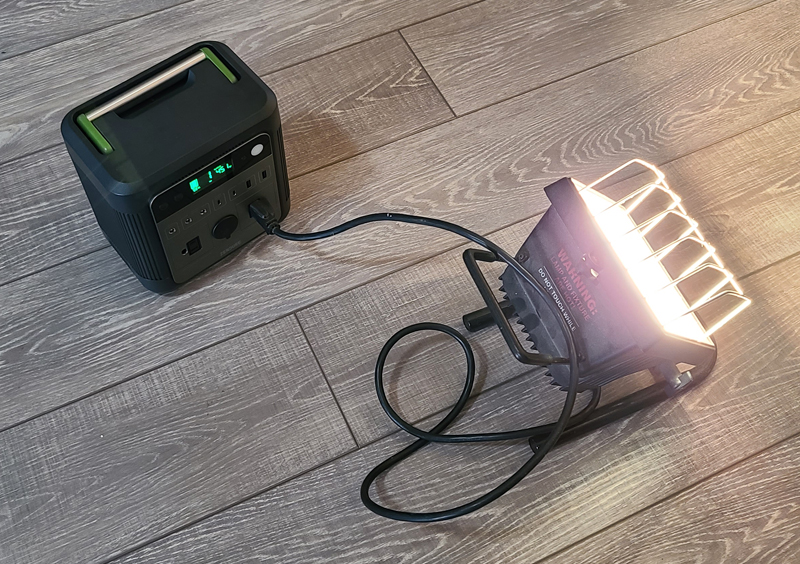
The display showed about 1 hour of runtime and that it was providing 449 Watts of output power.
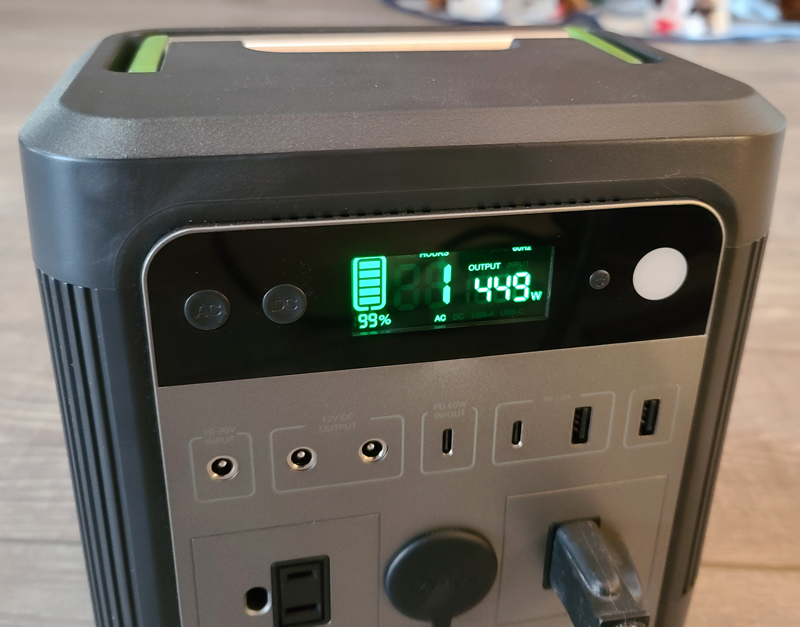
After a while, I checked again and the runtime showed 44 minutes remaining.
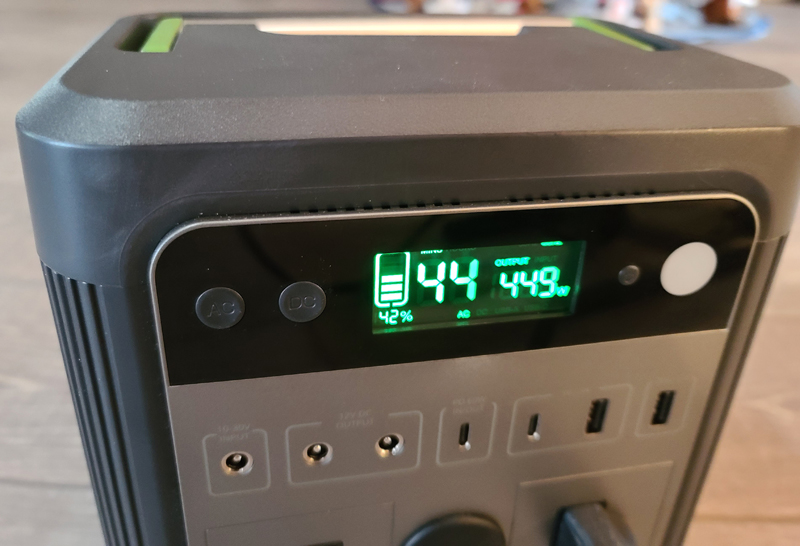
In just about an hour, the unit powered down, depleted. The runtime was a few minutes shorter than expected, but like with other lithium-polymer powered devices, the battery likely needs a few break-in cycles.
While supplying high-power output, the cooling fan runs and is certainly quite noticeable. I wouldn’t want to use this when I was trying to sleep.
I plugged in the 100W AC power unit and tried to recharge the SuperBase 500.
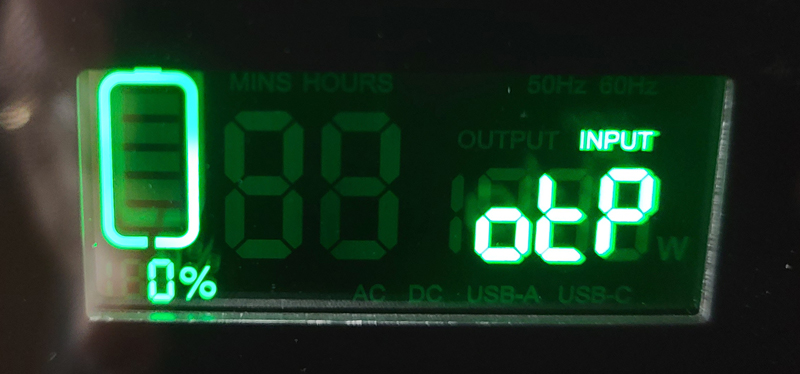
The unit was warm and the display flashed the above message, indicating that it was over-temperature for recharging. That’s not surprising, as batteries need a cool-down period after high-drain activity. After it cooled, I was able to recharge the unit from AC power in about 6 hours as advertised.
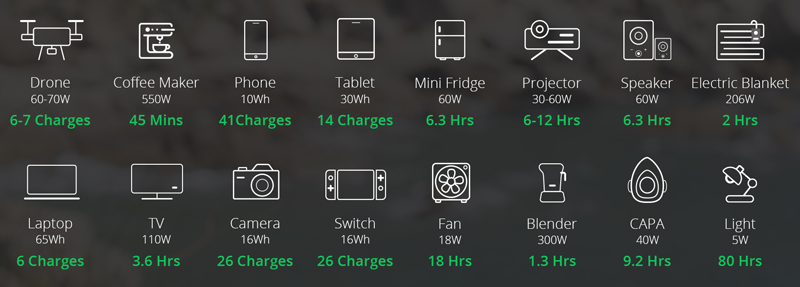
Above is a list of potential charge scenarios from a fully-charged SuperBase 500. If you’re a camper and need a C-PAP to sleep, you could get a full night out of a charge.
Finally, adding the flashlight functionality is a nice touch. The flashlight mode is plenty bright to illuminate a small space or a path. The nightlight mode is nicely dim. The SOS mode repeatedly flashes the Morse code dot-dot-dot-dash-dash-dash-dot-dot-dot to indicate SOS – a nice touch in an emergency.
Another day, with the unit mostly charged, I ventured outside on a nice, sunny, central Florida day.
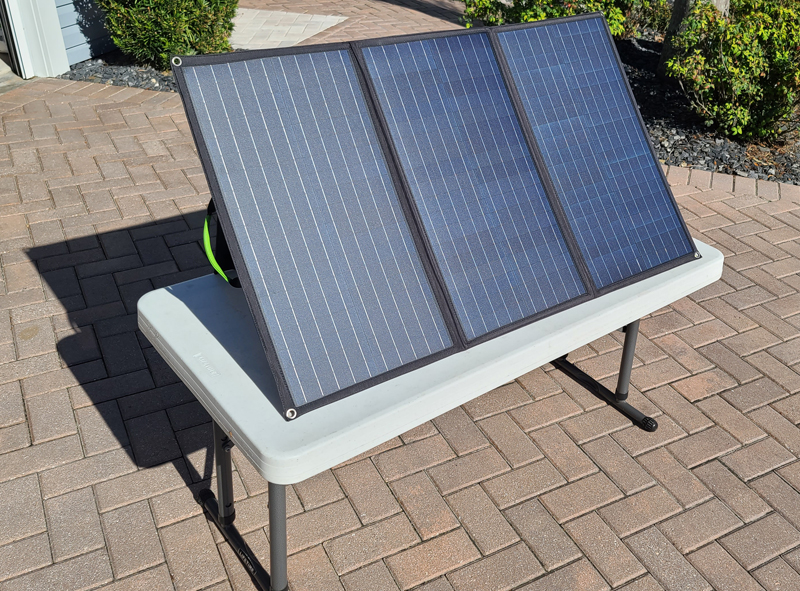
I angled the panel toward the sun and plugged in the SuperBase 500 as well as my cell phone.
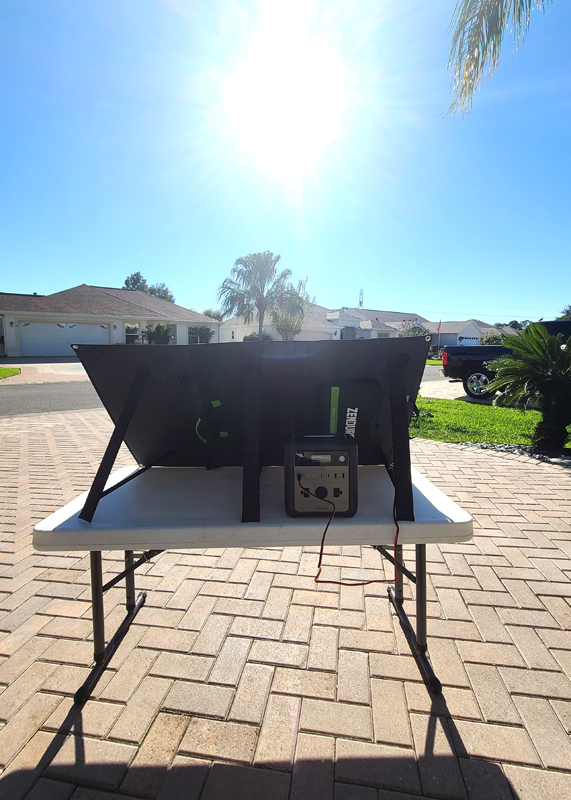
You can see the SuperBase 500 behind the panel with the charging cable plugged into both. Here are the cords plugged into the controller, USB on the left, and SuperBase on the right, with the solar indicator glowing bright green, meaning that the panel was producing electricity.
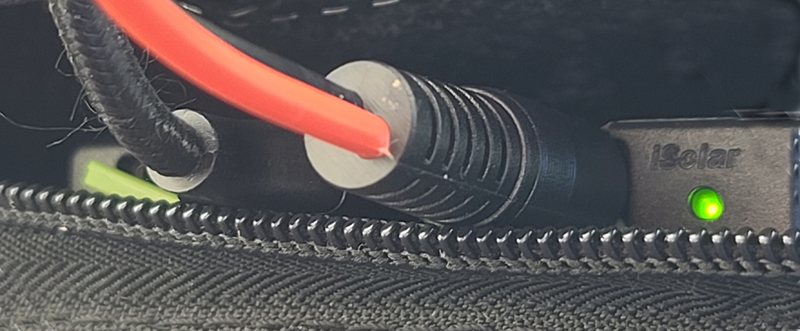
Since the SuperBase was nearly charged, it didn’t draw the full 100W the panel can produce.
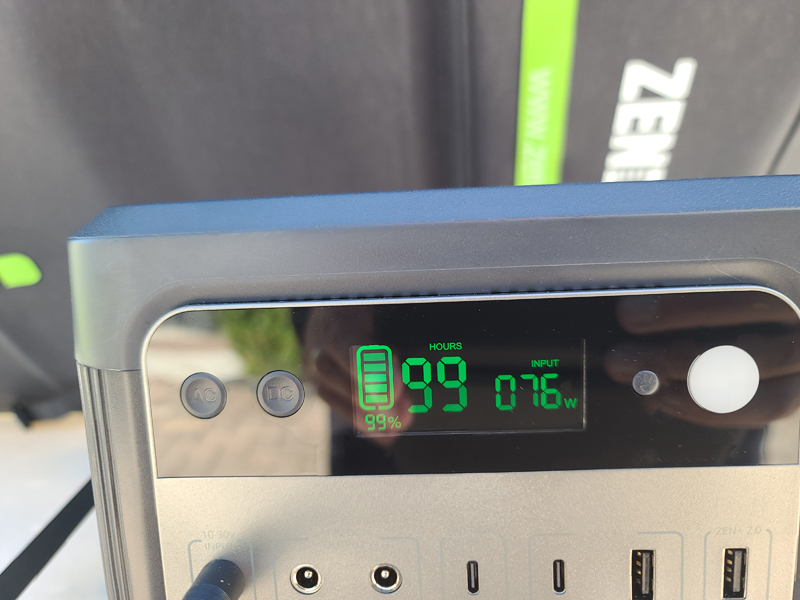
My cell phone was also happily sucking up electrons, courtesy of the Sun.

To be clear, the panel was simultaneously charging the SuperBase 500 and my cell phone. That’s pretty cool.
What I like
- Big power from a small size
- Incredibly portable
- Terrific charging options and power output options – you can theoretically power nine separate devices at the same time
- The solar panel adds real flexibility
What I’d change
- The covers on the solar controller are a little finicky and get in the way of the cables
- The cooling fan can be a little loud
Final thoughts
This is a great little power station. Having this charged and ready in hurricane-prone Florida is a nice insurance policy. The ability to support devices up to 600W is really impressive. Adding the solar panel to the equation makes this a versatile power source for an extended power outage. Bringing the solar panel on a beach day could provide all-day power for a Bluetooth speaker and phone. All-in-all, the Zendure SuperBase 500 and solar panel system is a great portable and flexible power solution, all under 20 pounds.
Price: $449 for the SuperBase 500. $599 gets you the SuperBase plus the solar panel. The solar panel is also offered separately for $159.
Where to buy: Zendure (currently pre-order with shipping in March 2021)
Source: The sample of this product was provided by Zendure.


